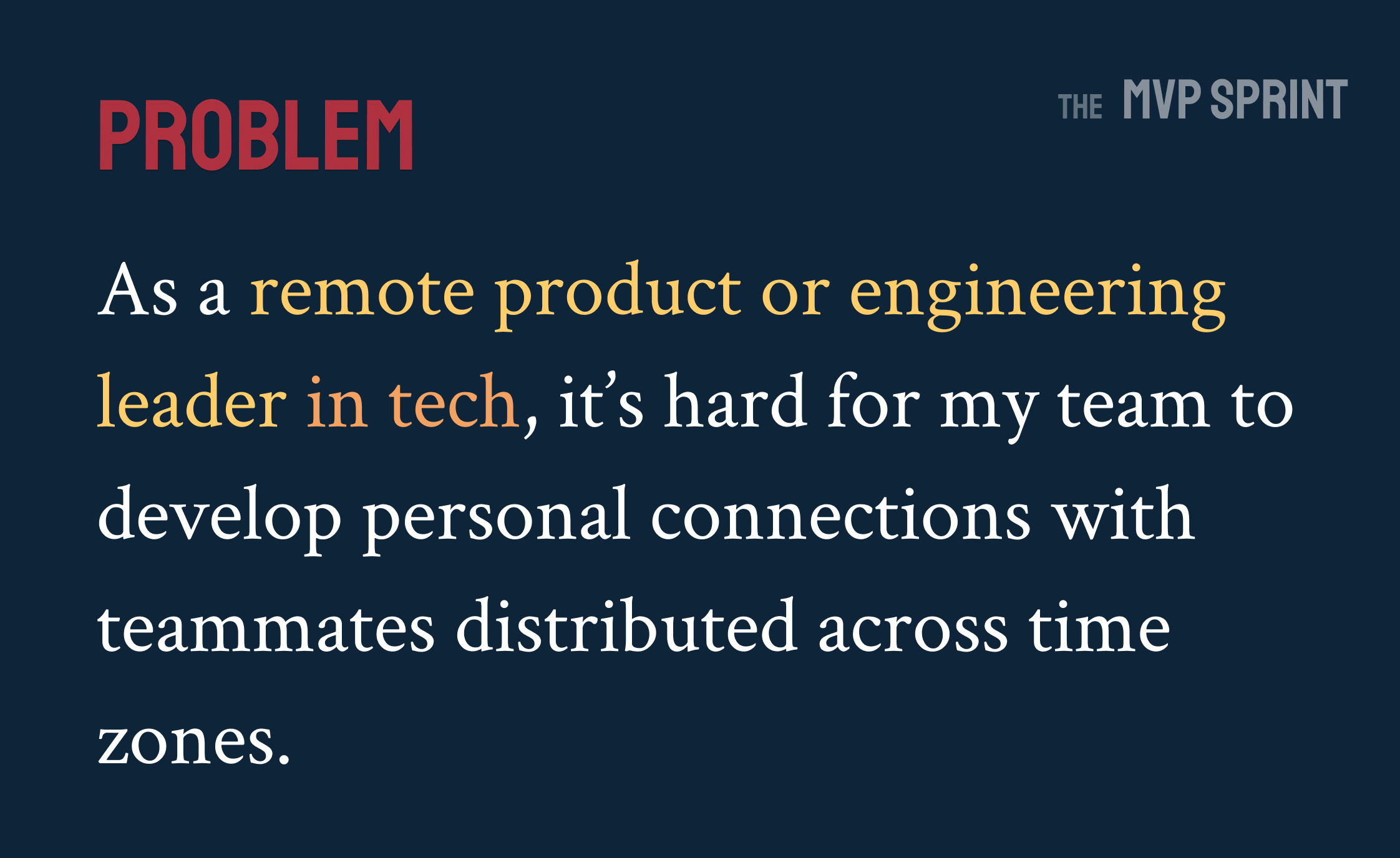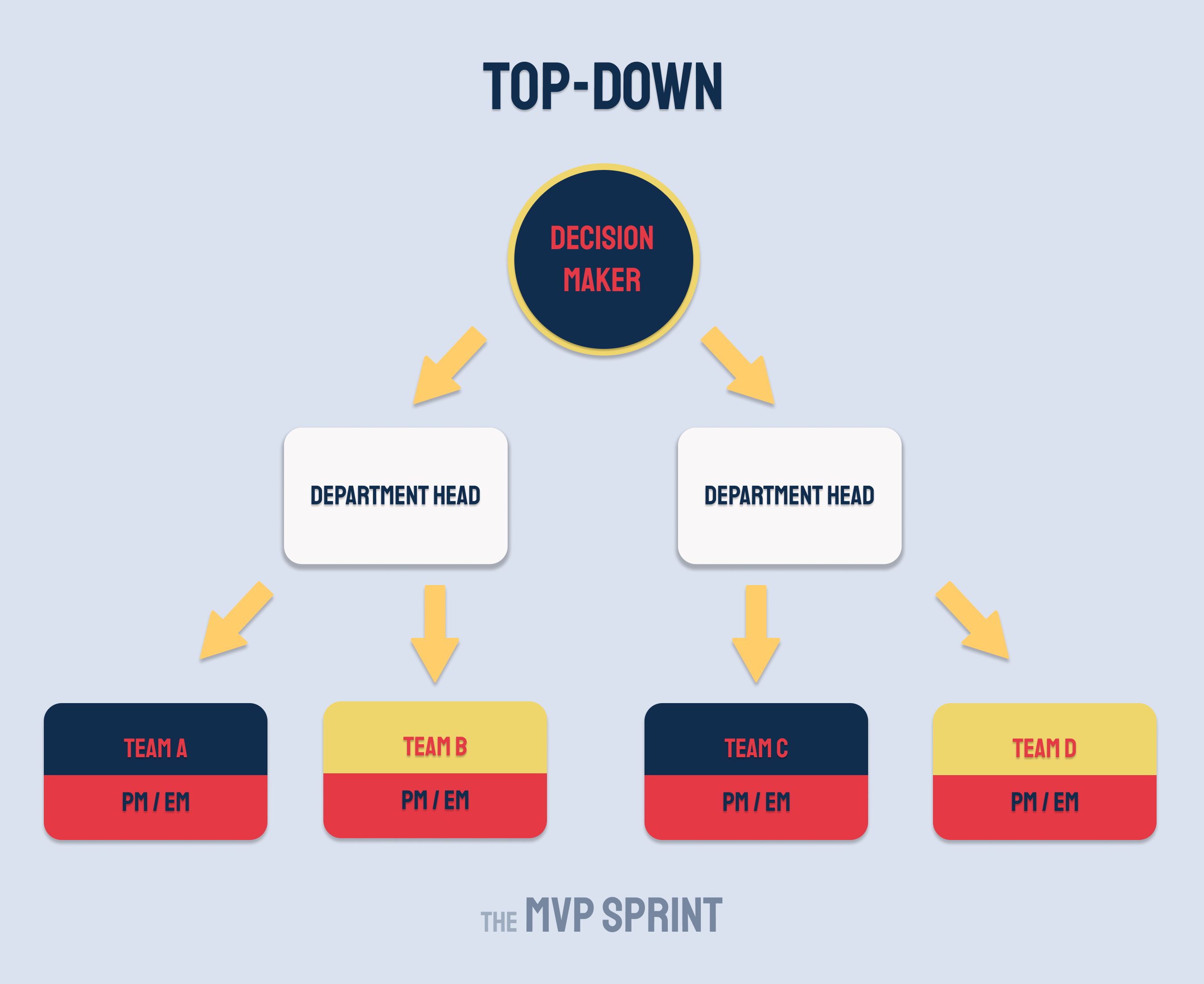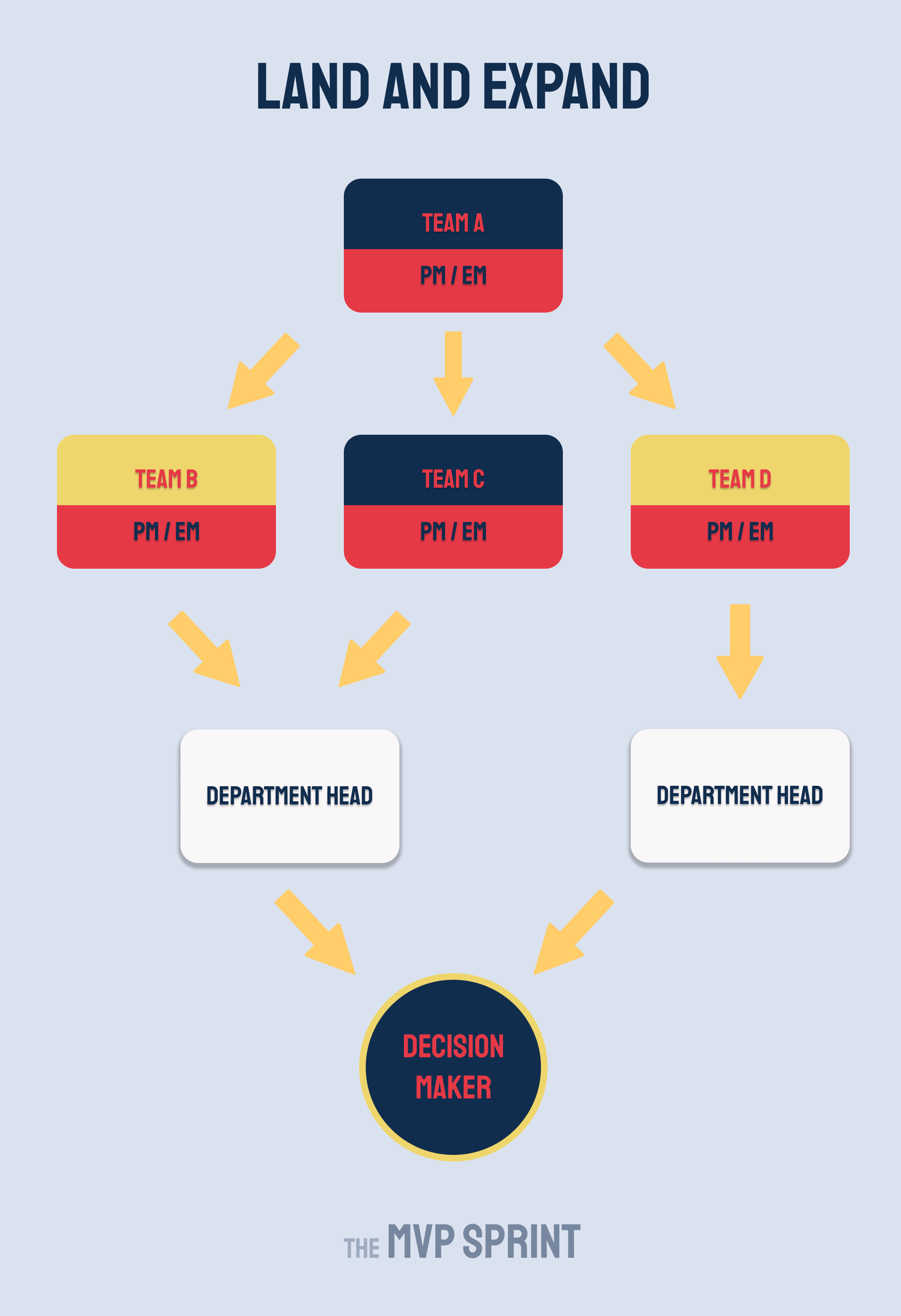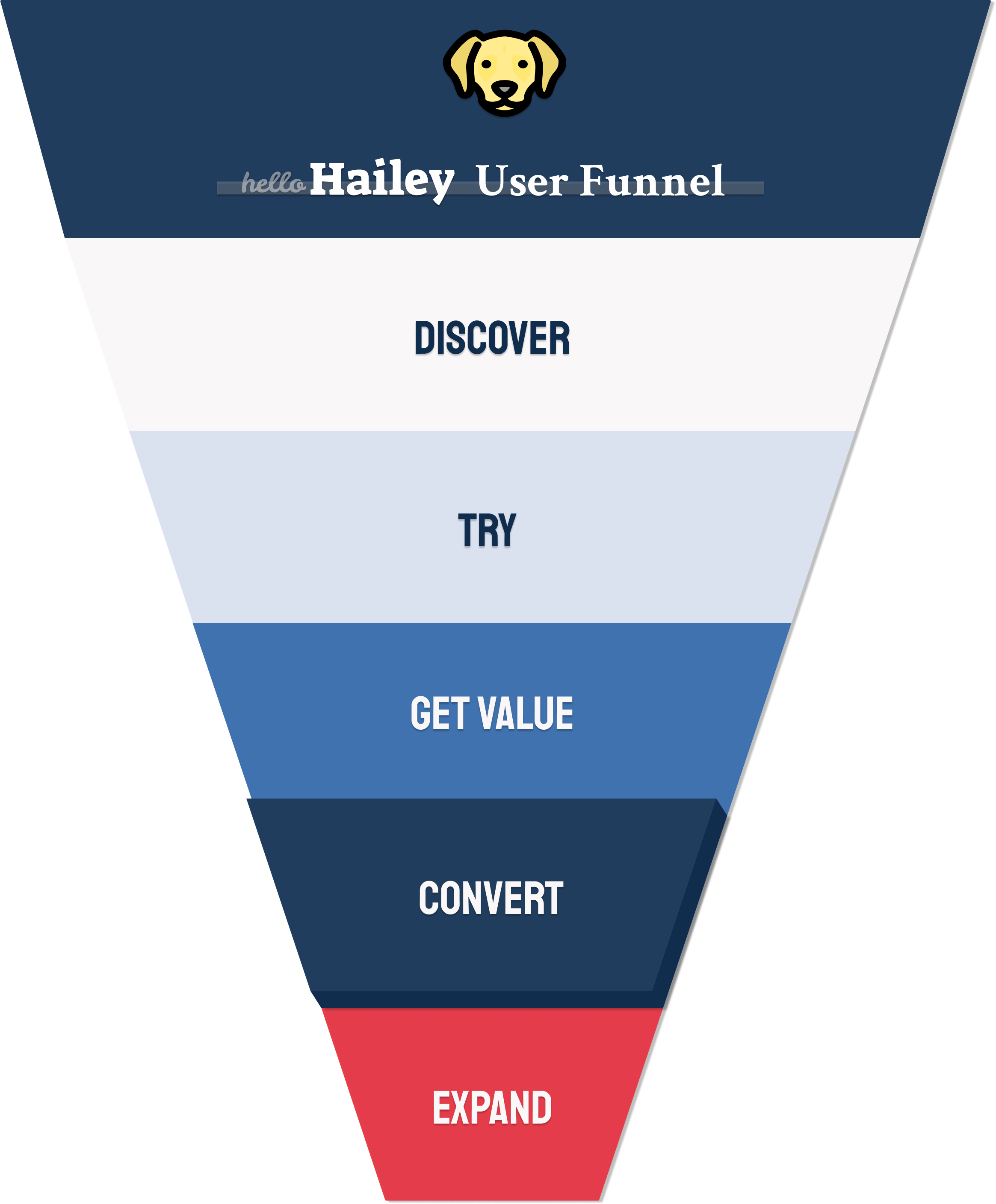Selling my SaaS to unicorns as an Indie Hacker
Me - a bootstrapped solopreneur with a laptop and a dream.
Them - a unicorn with 10,000+ employees.
Can a solo Indie Hacker really sell a product to unicorns?
Spoiler alert - yes they can 😁
First, some background on my product
I'm building HelloHailey in public to solve this problem:

Yes, it's a vague landing page - because I haven't defined what I'm building yet. I've been laser focused on starting with a problem first - before I write any code.
Over the last 4 weeks, I’ve chosen a problem to solve, picked a niche, validated my problem, and created a top-of-the-funnel distribution strategy.

I'm confident I can get eyeballs on my product. But I know very little about B2B purchasing processes for low-ticket ($25-$50 / month) SaaS products - so I can convert those eyeballs into paid users.
So last week I learned.
🚀 Land and expand
The traditional SaaS sales process follows a top-down approach. A sales rep targets a high-level decision maker for a high-priced deal.
After a long sales process, a company slowly integrates a piece of software. The command comes from high in the org chart and makes its way down.

But I’ll be selling bottom-up
I’ll scale the corporate walls via product managers (PMs) and engineering managers (EMs).
I’ll look unintimidating - a low price product that eats up a small chunk of a budget these team leads control.
Then I’ll spread through the company via growth mechanisms built into the product.

It's time to test out my landing gear
"Land and expand" fails if I can't "land" first. So to avoid putting the cart before the horse, this week is all about my "landing" strategy.
Here's what I think my user funnel will look like for a PM or EM:

- Discover through top-of-the-funnel distribution channels.
- Try for free with their team.
- Get value - signaled by high engagement and retention.
- Convert to paid tier - to unlock premium features or exceed maximum number of seats (users) in free tier.
- Expand - add more seats within their company.
💰 How low-ticket SaaS products get purchased
I probed into my network of EMs and PMs to figure out what it looks like from the inside.
It turns out the approval and purchase process is just two steps:
1. Ask a manager
Approval is loose and informal. PMs and EMs briefly mention it to their managers over email or their regular check-in.
2. Find a credit card
With very few exceptions, PMs and EMs (at the levels I’m targeting) don’t have company credit cards. So how do they pay after getting approval?
- Pay with a personal card and expense
- Find a company card - usually from someone a few levels above them in the org chart, IT, or finance.
😁 Why I think my strategy will work
✅ Loose approval process
I mentioned this before, but it’s worth restating. This means that the PM or EM using HelloHailey is the primary decision maker.
No bureaucracy. No long, complex sales cycles.
I just need to build a great product.
✅ Fits into an existing budget
It’s my hypothesis that teams will pay for HelloHailey using their team “social” budgets. These budgets cover expenses like meals, games, or team events.
✅ Takes a small percentage of that budget
Team social budgets range from $10-$100 / person / month, with a median somewhere in the middle.
With a price of $2-$3 / person / month, HelloHailey would eat up only 5% of that budget on average.
✅ Social budgets have been underutilized with sudden shift to remote work
Half the people I talked to haven’t used their social budgets at all since being forced into remote work.
What about expanding?
I now feel confident about landing. So how will I expand?
I have some ideas for how I can build growth mechanisms into a product like this.
But if I’m being honest, I’m not sure yet 🤷♂️. And I’m OK with that.
With a successful “land” strategy, and low to moderate expansion revenue, I can build a great business.
Intra-company virality would be a must if I wanted to become a VC-backed rocket ship.
But that’s not my goal.
As an Indie Hacker, I want to build a small, profitable company that solves a problem I’m passionate about.
I can sell to unicorns. But I don’t want to become one.

What tool did you use to create the graphics in your IH post?
I use Figma with icons from Flaticon.